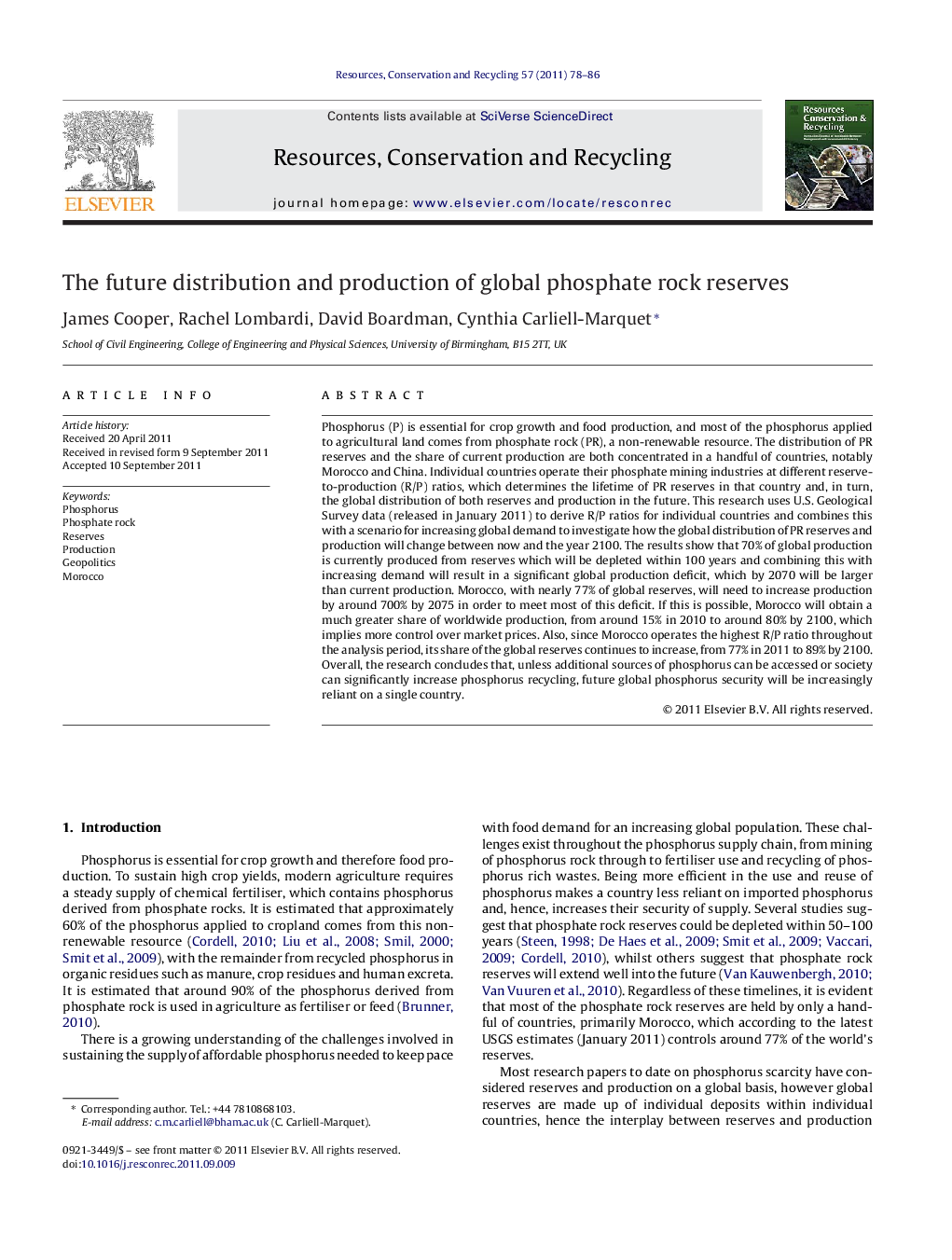| Article ID | Journal | Published Year | Pages | File Type |
|---|---|---|---|---|
| 1063377 | Resources, Conservation and Recycling | 2011 | 9 Pages |
Phosphorus (P) is essential for crop growth and food production, and most of the phosphorus applied to agricultural land comes from phosphate rock (PR), a non-renewable resource. The distribution of PR reserves and the share of current production are both concentrated in a handful of countries, notably Morocco and China. Individual countries operate their phosphate mining industries at different reserve-to-production (R/P) ratios, which determines the lifetime of PR reserves in that country and, in turn, the global distribution of both reserves and production in the future. This research uses U.S. Geological Survey data (released in January 2011) to derive R/P ratios for individual countries and combines this with a scenario for increasing global demand to investigate how the global distribution of PR reserves and production will change between now and the year 2100. The results show that 70% of global production is currently produced from reserves which will be depleted within 100 years and combining this with increasing demand will result in a significant global production deficit, which by 2070 will be larger than current production. Morocco, with nearly 77% of global reserves, will need to increase production by around 700% by 2075 in order to meet most of this deficit. If this is possible, Morocco will obtain a much greater share of worldwide production, from around 15% in 2010 to around 80% by 2100, which implies more control over market prices. Also, since Morocco operates the highest R/P ratio throughout the analysis period, its share of the global reserves continues to increase, from 77% in 2011 to 89% by 2100. Overall, the research concludes that, unless additional sources of phosphorus can be accessed or society can significantly increase phosphorus recycling, future global phosphorus security will be increasingly reliant on a single country.
► Global phosphate rock (PR) reserves and production are geographically concentrated. ► The lifetime of PR reserves varies within individual countries. ► Many countries will deplete their current economic PR reserves within 100 years. ► Depleting reserves plus rising demand for PR could create a production deficit. ► Morocco is likely to obtain a much larger share of global PR production.
